Given the sheer amount of less-than-reliable fly fishing information floating around on the internet, it’s not always easy for anglers to know who to trust when it comes to gear, tactics, destinations, techniques, skills, fly choice, etc. With that in mind, Hatch Magazine asked the instructors at one of the world’s finest fly fishing schools, the School of Trout, for their opinions on a wide variety of fly fishing subjects.
Here, lightly edited for clarity’s sake, are Hatch Magazine’s questions, as well as answers from School of Trout instructors Bob White, Tom Rosenbauer, Kirk Deeter, Todd Tanner, Hilary Hutcheson, Tim Romano, Pat McCabe, Karlie Roland, Jeff Currier, Craig Mathews, Brant Oswald, Steve “Mac” McFarland and John Juracek.
HATCH MAGAZINE: What’s the best knot for attaching my tippet to my leader?
KIRK DEETER: The best knot to attach tippet to a leader is the knot you’re good at tying, that you have confidence in, that you test and trust. I like the blood knot, but I’ve made a living fishing a double surgeon’s all over and have no regrets.
HM: What’s your favorite streamer for big trout?
BOB WHITE: The Wilderdilch.
(Editor’s note: You’re not alone. We were not familiar with the Wilderdilch, either.)
HM: Why do I end up with so many wind knots in my leader?
BRANT OSWALD: Wind knots are a product of tailing loops in the fly line as the cast unrolls to the target. The bane of the typical angler, wind knots weaken the leader or tippet, while the kinks and small tangles kill accuracy. There are several ultimate causes of tailing loops, but they generally occur when the caster fails to match the length of the cast (and therefore the amount of bend in the rod) with the length of the casting stroke. The best remedy for wind knots? A session or two with a competent casting instructor and a commitment to regular practice.
HM: How long should it take me to play and land a trout?
TODD TANNER: The short answer is that you should play all your fish as quickly as possible. The slightly longer answer is that it’s important for all of us to play, land and release our fish in a way that gives them the best odds for recovery and survival. In general, you should be able to subdue the vast majority of the trout you hook in 60 to 90 seconds. There’s no reason to play a fish tentatively. Push your tackle and your tippet right to the edge, avoid stalemates where you’re neither gaining nor losing line, and keep in mind that it’s always better to break a fish off than to play it too long.
HM: Do I really need to spend money on a reel with a good drag system?
KARLIE ROLAND: It depends on what you are doing. If you need a drag, absolutely. Do you strip in line when fighting a fish or do you always try to put it on the reel? A drag system can be very useful for a newer angler who may not have the best line management skills yet. Saltwater fishing? Yes. Spend the money. Small creeks where you can strip in a fish easily? Maybe not. All-around 6wt? Absolutely. When you fight your mega monster fish you'll have all the confidence in the world with a nice drag system.
HM: Sling pack, fanny pack or fly fishing vest?
TOM ROSENBAUER: Sling pack!
HM: Should I learn to Euro nymph?
JEFF CURRIER: Even if you’re a stubborn ole dry fly angler like myself, it doesn’t hurt to add arrows to the quiver. Euro nymphing is my least favorite type of fly fishing. However when there’s no dry fly action to be had, whether its cold weather or high water, if I need to catch a fish, Euro nymphing can often produce. I also use Euro nymphing to catch oddball species such as suckers and chubs on purpose, for a good tug!
(Editor’s note: To date, Jeff, who has been called “the most interesting person in fly fishing,” has caught at least 455 different species of fish on a fly rod.)
HM: What’s the best month to fish Alaska?
BOB WHITE: My favorite time to fish in Alaska (with bugs) would be early July to early August. Many fishermen consider this the “shoulder season" between king and silver salmon and it’s also pre egg-drop. My favorite time to “be” in Alaska would be the last week of August until mid September. Autumn happens quickly and the best of it happens over the first week of September. The tundra turns to scarlets, golds, and purples before your eyes. The birch, alder, and cottonwood trees are shades of yellows and copper, in perfect harmony with the long cobalt and shadows that cross whole valleys. The fishing is great too. The egg-drop is in full swing, and the rainbow, grayling, Arctic char and Dolly Varden are fat, strong, and willing. The silver salmon run will peak, but is still strong with bright, sea-lice laden fish running into the coastal rivers on each incoming high tide.
HM: What’s your favorite month to fish Idaho or Montana?
TODD TANNER: Water levels, water temperatures and atmospheric conditions vary widely from year to year, and with our climate shifting rapidly there’s really no way to predict the best month to fly fish Idaho or Montana. That said, my favorite month is typically October. It helps that our angling pressure diminishes in October, and that the water temperatures are usually ideal. I also love being on the water as the autumn colors start to peak. Keep in mind, though, that our famous hatches — salmon flies, green drakes, pale morning duns, etc. — tend to show up in late spring or early summer. If you’re chasing an individual hatch, you’ll need to visit when those particular insects are coming off.
HM: What’s the best all-around trout taper, WF (weight forward) or DT (double taper)?
JOHN JURACEK: WF or DT? It’s an age-old debate, and there is no one-size-fits-all answer. I always fish a DT for trout, but either taper can be the best — it depends on the exact requirements of the intended fishing. For the majority of anglers, I consider DTs and WFs to be interchangeable.
(Editor’s note: For a more detailed discussion of DTs and WFs, please read John’s 2023 article in Hatch.)
HM: How do I determine what size tippet to use when I’m fishing for trout?
BRANT OSWALD: Tippet size ultimately comes down to matching the tippet with the fly size. A large, bulky or weighted fly fished on a too-light tippet makes accuracy difficult and invites tangles. Smaller flies need to be fished on tippet light enough to allow them to drift naturally if trout are selective. The old “Rule of 3” has been around forever—take the fly size and divide by 3 to get a ballpark idea of an appropriate tippet size. That’s fine, but it assumes the typical angler is familiar enough with fly sizes to apply the formula. Unless they tie flies, I don’t fish with many anglers who can pick flies out by size. As an aside, I find figuring out tippet sizes to be a landmark point in an angler’s education. With enough considered experience, an angler doesn’t think numbers or formulas—tippet sizes become part of the vocabulary. This current, with this wind, with the fly that I have chosen: “This looks like 5X to me.” A final thought — be sure that your knot tying skills don’t make you fish the wrong tippet size because you are afraid to take the time to tie a knot …
HM: I fish for trout on rivers, lakes and streams. What size rods do I really need?
TODD TANNER: Your rod choice depends mostly on the size of the fly you’re fishing and the amount of wind you’re expecting. I don’t use rods in the 1 weight to 3 weight range, as a 4 weight offers all the delicacy I’ll ever need. Nor do I fish rods heavier than a 6 weight for trout unless I’m targeting big fish; larger than 10 lbs. Which means that if I have a 4 weight for small-to-medium sized dry flies and nymphs, a 5 weight for dries, nymphs and smaller streamers, and a 6 weight for larger or heavier flies on windy days, I’m in great shape. I should also point out that while a 7 weight can be a reasonable choice for casting streamers, it’s serious overkill for the vast majority of the trout you’ll hook in the Lower 48. As for length … while most of my graphite trout rods are 9 feet long, I do have some 8 footers for fishing smaller streams.
HM: What’s your favorite fly rod?
PAT MCCABE: My favorite fly rod is a Montana Brothers 904L. It’s a slow action 4 weight. I primarily fish dry flies during “match the hatch” situations and I also like sight nymphing to visibly feeding trout. If I find myself needing larger dry flies, or heavier nymphs or streamers, my go-to rod is a 9’ 5 weight Winston IM6. I use either Orvis or SA double taper fly lines for everything below a 6 weight.
HM: What’s your favorite fly rod?
TOM ROSENBAUER: Either the new Orvis Helios F 7’6” 3 weight or the new Helios F 9’ 4 weight.
HM: What’s your favorite fly rod?
JOHN JURACEK: The Montana Brothers 9’ 4 weight (904M). Almost all my fishing is done with dry flies or small nymphs, and this rod handles the casting and fishing demands of challenging situations like no other rod I’ve ever seen or fished.
HM: What kind of wading boot soles do you recommend: felt, rubber, studs or aluminum bars?
HILARY HUTCHESON: I love rubber soles. I'm constantly jumping in and out of the raft, walking along the raft tubes and scrambling up river banks of varied terrain, so the pliability and ease of footwear that feels like a trail shoe works best for me. In terms of slickness on the river, I love rubber soles for our freestones. The agility of a rubber sole allows me to connect with the dynamic substrate. Plus, I feel much stealthier than when there is metal on my feet.
HM: What’s your favorite knot for attaching your trout flies to your tippet?
TOM ROSENBAUER: The regular clinch knot. (Not the improved clinch knot.)
HM: Given the choice, would you rather fish dries, nymphs or streamers?
STEVE “MAC” MCFARLAND: Dry flies!
HM: Given the choice, would you rather fish dries, nymphs or streamers?
TIM ROMANO: Tough. Very tough question. If I’m going to be honest, streamers. But that could get trumped easily by many dry fly situations.
HM: How often should I practice my casting?
KARLIE ROLAND: You should practice casting as much as you can, and especially before going on a trip. Pick windy days, too, and practice casting into all angles of the wind.
HM: What waders did you fish in during 2023, and do you recommend them?
PAT MCCABE: I’ve been wearing the same Patagonia zip-front waders for about 5 seasons now. I believe they are the “Rio Gallegos ll.” I checked them recently for leaks and they’re still going strong.
HM: If you could only fish one state for trout in 2024, which one would you pick?
JEFF CURRIER: Wisconsin. I recently moved to Wisconsin so I could fish for a variety of species I didn’t have near my Idaho home over the last 34 years. Yet I still needed my regular trout fix. Fortunately, Wisconsin has sneaky excellent and under-fished trout waters. In 2024 I’m looking forward to taking the time to explore my new trout stomping grounds.
HM: Would you rather float or wade?
TIM ROMANO: Float!
HM: Would you rather float or wade?
CRAIG MATTHEWS: I would far rather wade than float. Floating involves too much fussing with the boat, maneuvering along at 3-4mph-banging oars on rocks, and mindlessly staring at water. Wading allows me to carefully watch the water for insect activity and trout rising to the insects, and I can better read the water. Sometimes I sit patiently on the bank enjoying the scenery and waiting for the trout to rise while not dealing with all the boat issues like getting back to my rig at the end of the float, etc.
HM: What’s your favorite fly pattern for trout?
STEVE “MAC” MCFARLAND: That’s a tough call, but I have to go with a woolly bugger. Usually an olive bugger.
HM: What’s your favorite fly pattern for trout?
HILARY HUTCHESON: For our native westslope cutthroat here on the Flathead River, I love throwing stonefly variations all summer. Cutties are looking for a solid meal, and a juicy, meaty golden stone pattern is my go-to. Plus, I prefer easy-to-see, buoyant dry flies that perform well in a peppy current and pocket water.
HM: What’s your favorite fly pattern for trout?
CRAIG MATTHEWS: If I had to have one fly for trout it would be a simple foam beetle since trout will rise to a beetle 12 months of the year. My favorite fly design is a Sparkle Dun since it imitates all mayflies in the fly fishing world.
HM: Which will improve my angling results the most: 1) spending the money to upgrade my old fly rod or 2) taking fly casting lessons from a casting instructor?
KIRK DEETER: No fly rod that’s ever been made is even close to being as valuable as learning and honing a great cast. A fancy new rod will be old news in five years, but your cast lasts a lifetime and works with any size fly rod in the world.
HM: Let’s say that I’m relatively new to the sport and I want to take my fly fishing to the next level. Can you share three helpful suggestions?
TODD TANNER: That’s easy. 1) Learn how to modify your leaders so you’re always fishing the right leader for the technique you’re using and the situation you’re in. 2) If you haven’t already done so, pick up a fly tying vise and some fly tying tools and start tying your own flies. Many anglers experience a major increase in their success after they learn how to tie their own flies. 3) Find a really good casting instructor, someone like John Juracek or Brant Oswald, and learn the fundamentals. Then practice your casting regularly — I’d suggest once a week for 15 or 20 minutes —until you lock in your muscle memory and your casting becomes second nature for the rest of your life.




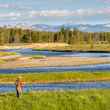






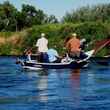




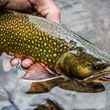
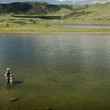



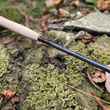
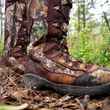



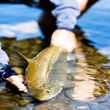
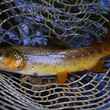



Comments
KayDu replied on Permalink
I've tried every pack out there, as have many I know, and few land on a sling pack for their longterm choice. I find it awkward to carry, lean over with, and access, and most put weight on your right shoulder/trapezius, which contributes to fatigue. I despise them.
Jim Parks replied on Permalink
I’m 100 in agreement with you! I wear a vest.
Jim Parks
TailsOfTheSmokies
DanD replied on Permalink
Another great article by Hatch. Keep up the good work!
Jon B. Tobey replied on Permalink
It's super nice to see Karly on here! I've both taken casting lessons from here and been guided by her.
Pages